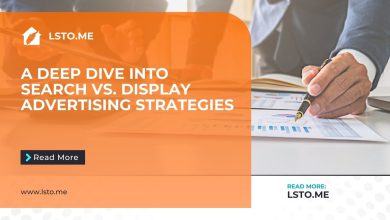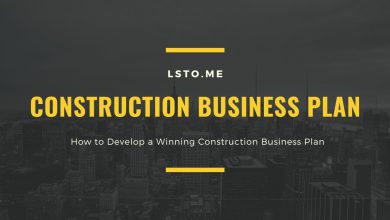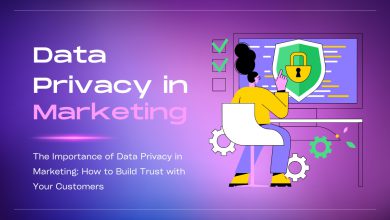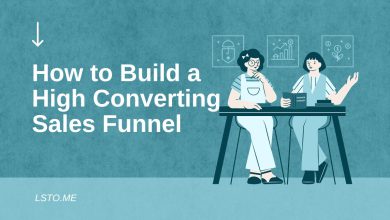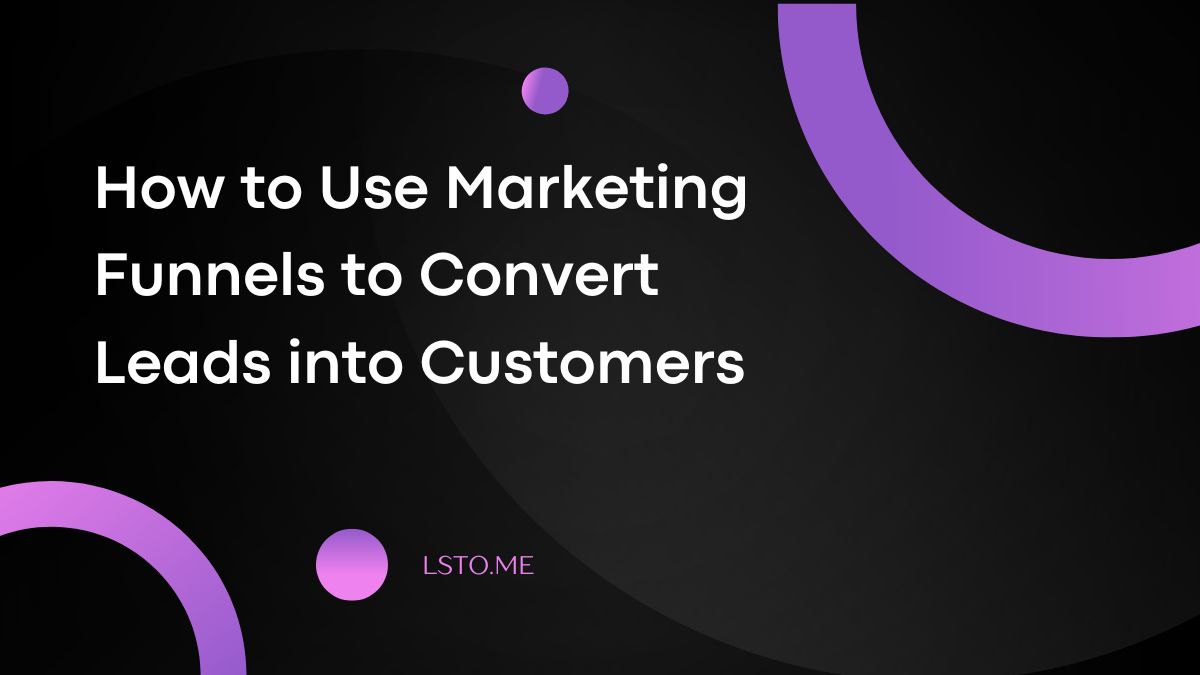
In today’s tough business world, converting leads into customers is hard. One of the most effective ways to manage this process is by using marketing funnels. A good marketing funnel lets you guide potential customers. It takes them from awareness to a purchase. This helps you attract leads and nurture them into loyal customers.
This blog post will explain how to use marketing funnels to convert leads into customers. It will provide actionable steps for each funnel stage.
What is a Marketing Funnel?
A marketing funnel is a model. It shows the journey of prospects. They start from being aware of your brand and end with a purchase. The funnel is wide at the top, where many may be interested. It narrows as potential customers move through the stages. The goal is to get them to buy and become repeat customers.
The Key Stages of a Marketing Funnel:
Awareness: The prospect learns about your brand, product, or service.
Interest: The prospect shows interest in what you offer by engaging with your content or visiting your website.
Consideration: The prospect evaluates your product or service and compares it to competitors.
Intent: The prospect signals intent to buy through actions such as adding a product to their cart or signing up for a free trial.
Conversion: The prospect becomes a customer by making a purchase.
Retention: After the sale, the focus shifts to keeping the customer engaged and encouraging repeat business.
You can greatly improve your conversion rate. Do this by understanding and optimizing each stage.
Step 1: Attract Leads with Awareness Campaigns
The first stage of the funnel is all about attracting potential customers to your brand. At this point, your audience may not even know that your product or service exists. Therefore, your goal is to increase brand visibility and make prospects aware of your offerings.
Tactics to Build Awareness:
Content Marketing: Publish valuable blog posts, articles, and videos that address common pain points or provide useful information in your niche. For example, if you sell fitness equipment, create content on workout routines, fitness tips, and equipment guides.
Social Media: Use platforms like Instagram, Facebook, Twitter, and LinkedIn to post engaging content that introduces your brand and offerings to a broader audience. Run ads to increase reach and target specific demographics.
SEO (Search Engine Optimization): Optimize your website content with relevant keywords so that it ranks higher on search engine results pages (SERPs). This will help more potential leads discover your business when searching for solutions related to your product.
Paid Advertising: Invest in pay-per-click (PPC) campaigns to drive traffic to your website and increase brand exposure.
The key here is to focus on providing value to your audience and positioning your brand as a solution to their problems.
Step 2: Engage Leads by Building Interest
Once you’ve attracted potential customers to your brand, the next step is to engage them by piquing their interest. At this stage, prospects are starting to explore your offerings and want to learn more about how your products or services can benefit them.
How to Build Interest:
Lead Magnets: Offer something of value in exchange for contact information, such as a free ebook, a discount code, or access to a webinar. Lead magnets are a great way to capture leads and keep them engaged with your brand.
Email Marketing: Use email to nurture leads by sending them personalized content based on their interactions with your brand. This could include educational content, testimonials, or product demos. They should highlight the benefits of your offering.
Product Demos or Trials: If applicable, provide free trials or product demos to give prospects a taste of what they can expect from your product. This can help build trust and interest.
Retargeting Ads: Use retargeting ads to remind visitors who have interacted with your website to come back and explore more. Retargeting ads can reignite interest and keep your brand top-of-mind.
The goal is to build a relationship with your leads. You can do this by showing your product’s value and addressing their questions and concerns.
Step 3: Guide Prospects in the Consideration Phase
In the consideration phase, your prospects are comparing your product with competitors. At this point, they need more specific information about how your product solves their problem.
Strategies to Drive Consideration:
Case Studies and Testimonials: Showcase real-life examples of customers who have benefited from your product. Customer testimonials, success stories, and case studies provide social proof and can help build trust.
Comparison Guides: Create comparison guides that highlight the unique features and benefits of your product versus competitors. Be honest and clear about why your solution is the best choice for your target audience.
Product Webinars: Host webinars or live demos to explain your product in detail and answer any questions prospects may have. This interactive format allows you to build a direct connection with your audience.
Email Sequences: Send targeted email campaigns that address potential objections and provide further clarification on why your product is the best fit.
By providing useful info and addressing concerns, you can help prospects decide.
Step 4: Encourage Action in the Intent Phase
At this stage, prospects are close to making a purchase, but they may need a little push to finalize their decision. Your goal is to make it as easy as possible for them to take the next step and move toward conversion.
How to Encourage Intent:
Clear Calls to Action (CTAs): Ensure that your website, landing pages, and emails include clear and compelling CTAs. These can be “Buy Now,” “Start Your Free Trial,” or “Schedule a Call.”
Limited-Time Offers: Create urgency by offering limited-time discounts, promotions, or bonuses. This can prompt leads to act quickly before the opportunity expires.
Abandoned Cart Emails: If prospects add items to their cart but don’t complete the purchase, send automated abandoned cart emails that remind them of their pending order and encourage them to complete the purchase.
Pricing Transparency: Make your pricing clear and easily accessible. Hidden fees or unclear pricing can cause prospects to abandon the process.
Simplifying the buying process and offering incentives can boost conversions.
Step 5: Convert Leads into Customers
At the bottom of the funnel, your prospects have made the decision to purchase. Now, it’s all about making the process smooth and ensuring that they complete the transaction.
Conversion Tactics:
Simplified Checkout Process: Remove any friction from the checkout process by minimizing the number of steps and making it easy for customers to complete their purchase.
Multiple Payment Options: Offer various payment methods to accommodate different preferences, including credit cards, PayPal, and digital wallets.
Follow-Up Emails: After the purchase, send a confirmation email with all the details of the transaction. Include a thank-you message and any additional resources to ensure a positive customer experience.
After the conversion, focus on customer retention and loyalty.
Step 6: Retain Customers and Encourage Repeat Business
The relationship with your customers doesn’t end after the first sale. Retaining customers and encouraging repeat purchases is critical to long-term business growth.
Retention and Loyalty Strategies:
Post-Purchase Follow-Up: Send follow-up emails to thank customers for their purchase, ask for feedback, and offer personalized recommendations for future purchases.
Loyalty Programs: Implement a loyalty program that rewards customers for repeat purchases. Offer exclusive deals, discounts, and early access to new products.
Customer Support: Provide excellent customer service to address any issues or questions that may arise. This helps build trust and increases the chances of repeat business.
Cross-Selling and Upselling: Offer related products or upgrades to customers based on their previous purchases. This can increase customer lifetime value.
Step 7: Analyze and Optimize Your Funnel
Building a marketing funnel is not a one-time task. To ensure it performs effectively, you need to continuously analyze and optimize each stage of the funnel.
Metrics to Track:
Conversion Rates: Track the percentage of leads that move from one stage of the funnel to the next. Identify any drop-off points and make adjustments to improve conversions.
Cost Per Lead: Calculate the cost of acquiring each lead and compare it with the revenue generated. Optimize your marketing spend to maximize ROI.
Customer Lifetime Value (CLV): Measure the total revenue a customer generates over their lifetime to better understand the value of repeat business.
You can boost your success. Analyze your funnel’s performance. Make data-driven decisions to improve your conversion rates.
Conclusion
Marketing funnels are vital. They guide leads through a process that boosts conversions. Plan each stage: awareness, interest, consideration, intent, conversion, and retention. This will create a seamless journey that turns prospects into loyal customers.
Understand your audience’s needs. Provide value at every stage. Optimize your funnel for maximum conversions. A good marketing funnel is key. It will help you build a successful business. It will turn leads into paying customers.
